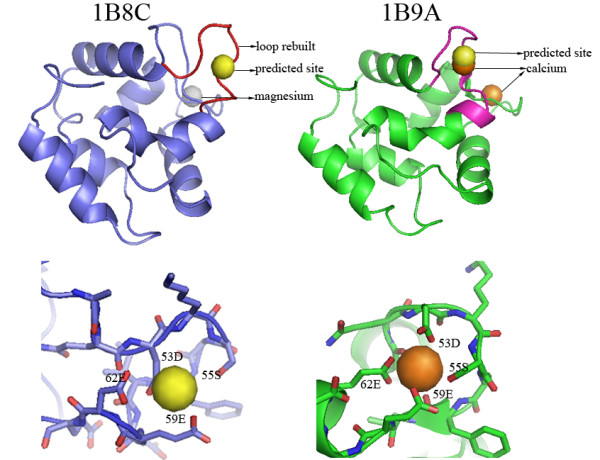Figure 1.

An example illustrating a successful FEATURE prediction with the help of modeling methods. Parvalbumin-beta from cyprinus carpio is a calcium-binding protein and two structures 1B8C and 1B9A have been resolved experimentally. 1B9A binds to two calcium ions via loop 90-97 (residue 90-97) and loop 51-62 (pink, residues 51-62: AQDKSGFIEEDE). 1B8C binds to one magnesium ion via loop 90-97. The loop 51-62 in 1B8C does not bind any metal ions, thereby considered as apo form. The RMSD between 1B9A and 1B8C is 1.48 Å. The RMSD of loop 51-62 in 1B9A and 1B8C is 2.68 Å. By scanning loop 51-62, FEATURE successfully identifies the sites in 1B9A, but not in 1B8C. In 1B8C, FEATURE can identify the site only when the loop 51-62 is rebuilt using modeling methods. The close-up view shows (red for oxygen atoms) that the predicted site in 1B8C and the experimentally observed site in 1B9A are similar. Both sites are in close associations with oxygen atoms from four residues 53D, 55S, 59E and 62E. This example demonstrates that FEATURE can successfully identify calcium-binding sites in holo structures and in apo structures with binding loops rebuilt by modeling methods.
